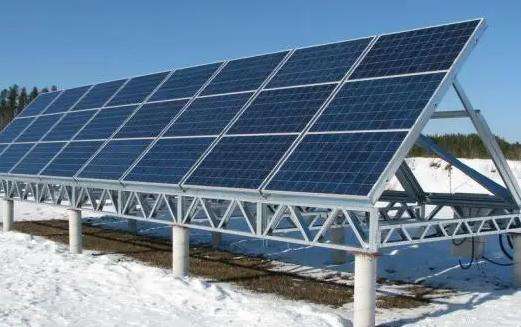1. The pressure of a stationary liquid does not apply to a flowing liquid. For liquids, regardless of the shape of the liquid or the shape of the container containing the liquid, p = ρgh can be used to calculate the pressure of the liquid at a certain depth.
2. Uniform density gas.
3. A cylindrical solid with uniform density and uniform mass distribution placed on a horizontal surface. For example, if a cylindrical aluminum block of uniform density and height h is placed on a horizontal table, the pressure on the table will be p=F/S=G/S=ρgsh/s=ρgh.
Detailed information:
Internal pressure of the liquid: p=ρgh (where ρ represents the density of the liquid, g represents the acceleration of gravity and h represents the depth of the liquid)
Derivation of the formula: The pressure formula can be derived from the basic formula: p = Derivation F/S
p liquid = F/S = G/S = mg/S = ρ liquid Vg/S = ρ liquid Shg/ S = ρ liquid hg = ρ liquid gh.
Since the pressure in all directions at the same depth inside the liquid is equal, as long as we calculate the vertical downward pressure of the liquid, we also know the pressure of the liquid in all directions. directions at that time. depth. This formula quantitatively gives the law of internal pressure of liquids.
Depth refers to the distance from the free surface of the liquid. Liquid pressure is related to the depth and density of the liquid, and has nothing to do with the mass of the liquid.
The cause of liquid pressure: gravity and fluidity.
Factors that affect liquid pressure: depth, liquid density (independent of container shape and liquid density)
The liquid pressure measuring instrument is called a U-shaped tube pressure gauge. Using the liquid pressure formula p = phg, h is the height difference between the two liquid levels, the pressure generated by calculating the liquid level difference is equal to the internal pressure of the liquid.
Baidu Encyclopedia - Pressure
Baidu Encyclopedia - Liquid Pressure
The boiling point of liquid water is related at standard pressure. Atmospheric pressure, the boiling point of water is 100°C. If we increase the pressure, the boiling point of water will also increase. For example, when the air pressure reaches 10 MPa, the boiling point of water can reach 300 °C. When the air pressure exceeds 22.064 MPa, it becomes supercritical water.
We know that it is difficult to cook rice by boiling water in a regular pot on the tray, because whenatmospheric pressure decreases, the boiling point of water also decreases, for example at an altitude of 1,000 meters. At 4,000 meters, the boiling point of water is only 88℃, the boiling point of water at the top of Mount Everest is only about 70℃. It is best to use a pressure cooker to cook the food at this time.
The design pressure in the pressure cooker is about 1.5-1.8 atmospheres, which corresponds to the boiling point of water which is 110℃~117℃, so it is faster to cook food in a pressure cooker because the temperature inside is higher.
In physics, crystalline substances often come in three forms: solid, liquid, and gas. We use a three-phase diagram to describe the relationship between material shape and pressure. water.
We can see from the image that water is generally divided into three regions: the solid region at the top, the liquid regionin the middle and the gaseous region below. The intersection of the three regions is called. the three phases. Point, the point data of the water three-phase diagram is:
273.16K (0.01℃), 611.73Pa.
Standard atmospheric pressure is 101.3 Kpa. The three-phase diagram of water shows that the solid-liquid boundary point at this time is freezing point 0°C and gas-liquid. the junction point is the boiling point 100°C.
As pressure increases, below 50 MPa (500 atmospheres), the freezing point temperature of water does not change much, but the boiling point of water increases considerably, such as:
( 1 ) At 0.15 MPa, the boiling point of water is 111 ℃;
(2) At 1 MPa, the boiling point of water is 180
(3) At 5 MPa, the boiling point of water is of 264 ℃;
(4) At 10 MPa, the boiling point of water is 311 ℃;
(5) At 20 MPa, the boiling point of boiling wateris 366℃.
In thermal power plants, water must be heated and evaporated under high pressure, then the steam drives the turbine to do its work. For subcritical units, the pressure inside the steam drum can reach 16~. 19 MPa and the internal boiling water temperature just above 300℃.
As the pressure increases, the difference between the gaseous and liquid states of water becomes smaller and smaller, until reaching the supercritical point (647K, 22.064 MPa), both do not can no longer be distinguished, except in the solid state region. The water is collectively called supercritical water. For example, in the supercritical unit of a thermal power plant, the main steam pressure reaches 25 MPa and the temperature can reach more than 500 degrees Celsius.
In an underwater crater 5,000 meters deep, the pressure reaches nearly 50 MPa (500 atmospheres). The water near the crater at this timeThis is supercritical water, with a water temperature of up to 450 degrees Celsius.
However, water temperature has no upper limit. When the temperature reaches a certain level, the chemical bonds in the water molecules break, forming a plasma state of hydrogen atoms and oxygen atoms. this time the substance has essentially. We can no longer call it water.














